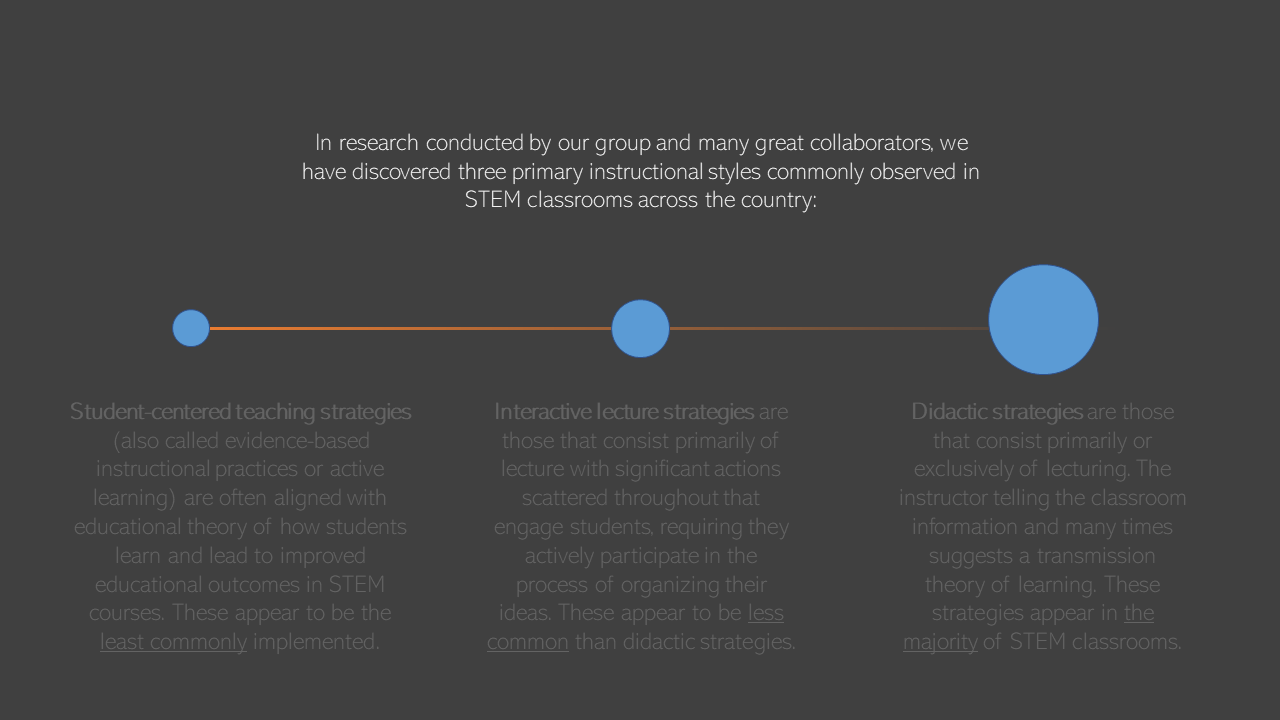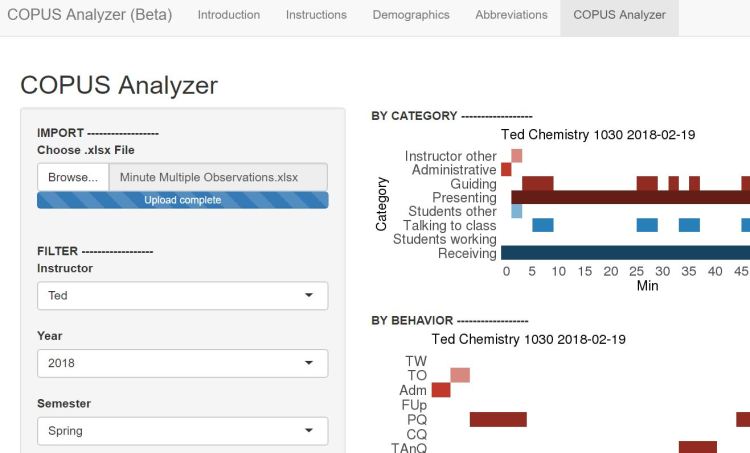The Harshman Research Group is focused on several key areas of research including effective graduate education in chemistry, robust statistics in chemistry education research, and instructional practices of STEM faculty. We have many projects ongoing that seek to better the landscape of chemistry education and contribute to the goal of discipline-based education research by conducting highly robust educational research. We are constantly trying to grow in the areas of qualitative and quantitative research. We are also passionate about R, a statistical coding language that many of the group’s members find extremely helpful along the way.
Project: Effective Doctoral Education in Chemistry


Over 20,000 chemistry students are currently enrolled in a chemistry doctoral program across the country. These students are receive training over the course of five and half years (on average) before they are off to find employment in industry, academia, government, and other job sectors. They are teachers, researchers, consultants, producers, managers, and host of other titles. With such a variety of careers to take on, doctoral programs have a big shoes to fill in terms of the knowledge and skills that these students will need to successfully obtain and succeed in their careers of choice.
The Harshman Research Group is interested in identifying what knowledge and skills chemistry doctoral students will gain throughout their time in graduate programs as well as what knowledge and skills they will need to gain during their advanced training. Our hope is to be able to compare the two in order to identify any existing gaps in knowledge and skills, the effectiveness of traditional graduate components (i.e courses, research, seminars, preliminary exams, etc.), and discover more about the career preparedness of doctoral chemists.
Publications Related to Doctoral Education in Chemistry
Qu, T. & Harshman, J. (2022). Situational Interview Based Investigation of Advisor–Advisee Conflict Communication in U.S. Chemistry Graduate Education. J. Chem. Educ. 99, 3, 1400-1409. https://doi.org/10.1021/acs.jchemed.1c01117
Harshman, J. (2021). A Review of the Challenges that Face Doctoral Education in Chemistry. J. Chem. Educ. 98, 2, 259-269. https://doi.org/10.1021/acs.jchemed.0c00530
Busby, B. & Harshman, J. (2021). Program elements’ impact on chemistry doctoral students’ professional development: A longitudinal study. Chem. Educ. Res. & Pract. 22, 347-363. https://doi.org/10.1039/D0RP00200C
Cui, Q., & Harshman, J. (2020). A Qualitative Investigation to Identify the Knowledge and Skills that Chemists Require in the Workplace. J. Chem. Educ. 97, 5, 1247–1255. https://doi.org/10.1021/acs.jchemed.9b01027
Project: Instructional Practices in STEM Classrooms


We in the educational research community have known for some time that active learning strategies have a great potential to engage students for meaningful learning in tertiary STEM education and thanks to research conducted by many of our collaborators have now provided evidence that these strategies are not commonly found in STEM classrooms. Our research group is interested in further investigating patterns to be found instructor observations using the Classroom Observation Protocol for Undergraduate STEM (COPUS). Our hope is that these profiles and mini profiles will help the educational research community more directly link behaviors observed in the classroom with education outcomes.
Additionally, our group – along with Dr. Marilyne Stains at the University of Virginia – maintains the COPUS Analyzer website. This tool (pictured below) allows the user to upload COPUS data from their own classrooms or their own research projects and get meaningful feedback via effective visuals and classifications into the different profiles we have previously observed. Users also come to the site so they can easily compare different raters on the COPUS for establishing inter-rater reliability.

Publications Related to STEM Instructional Practices
Popova, M., Kraft, A., Harshman, J., & Stains, M. (2021). Changes in teaching beliefs of early-career chemistry faculty: A longitudinal investigation. Chem. Educ. Res. & Pract. 22 (2) 431 – 442. https://doi.org/10.1039/D0RP00313A
Popova, M., Kraft, A., Harshman, J., & Stains, M. (2020). Untangling a complex relationship: teaching beliefs and instructional practices of assistant chemistry faculty at research-intensive institutions. Chem. Educ. Res. & Pract. 21 (5), 513-527. 10.1039/C9RP00217K
Stains, M., Harshman, J., Barker, M. K., Chasteen, S. V., Cole, R., DeChenne-Peters, S. E., Eagan, M. K., Esson, J. M., Knight, J. K., Laski, F. A., Levis-Fitzgerald, M., Lee, C. J., Lo, S. M., McDonnell, L. M., McKay, T. A., Michelotti, N., Musgrove, A., Palmer, M. S., Plank, K. M., … Young, A. M. (2018). Anatomy of STEM Teaching in North American Universities. Science, 359(6383), 1468–1470. https://doi.org/10.1126/science.aap8892
Project: Robust Statistics in Chemistry Education Research


We have a passion in advancing statistical reasoning in chemistry education research as well as consuming the abundant literature that surrounds it. The Harshman Research Group heavily advocates for the use of R, a free programming language that is incredibly powerful in most research studies. Additionally, we want to be a contact if you have difficulties using the software as we are also passionate about teaching these skills to anyone willing to learn.
In addition to statistics, the group is also involved in a collaborative project with Jack Barbera at Portland State University and Regis Komperda at San Diego State University that seeks to compile instruments available in the chemistry education community in a centralized resource. Our project – the Chemistry Instrument Review and Assessment Library, or CHIRAL – has spawned a website to house these materials, that can be found here: https://chiral.chemedx.org/
Publications Related to Statistical Programming and CHIRAL
Stanbury, D. & Harshman, J. (2019). Large-Scale Models of Radiation Chemistry and the Principle of Detailed Balancing. J. Phys. Chem. A, 123 (47), 10240-10245. 10.1021/acs.jpca.9b07470
Stains, M. & Harshman, J. (2017). A review and evaluation of the internal structure and consistency of the Approaches to Teaching Inventory. Int. J. Sci. Educ. 39 (7), 918-936. 10.1080/09500693.2017.1310411
Harshman, J., Nielsen, S., & Yezierski, E. (2017). Putting the R in CER. In Gupta, T. Introduction to Computer-Aided Data Analysis in Chemical Education Research (CADACER). American Chemical Society. Washington, DC.